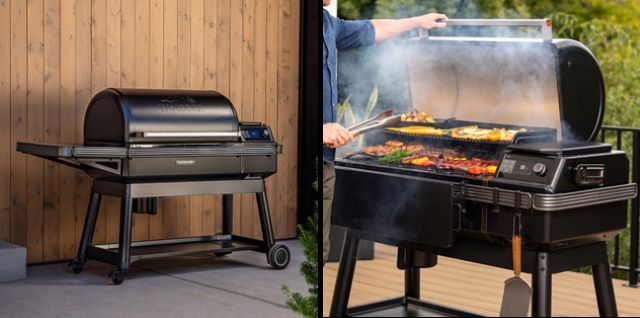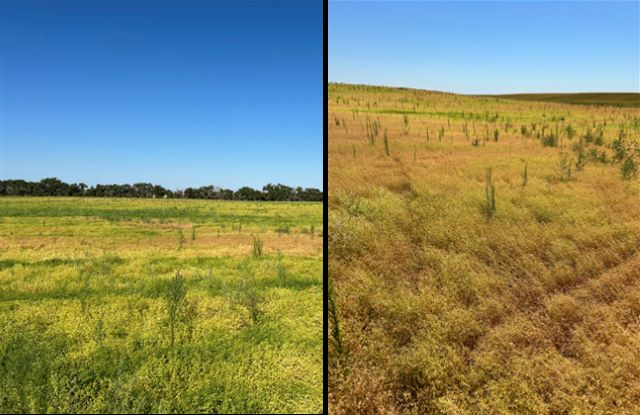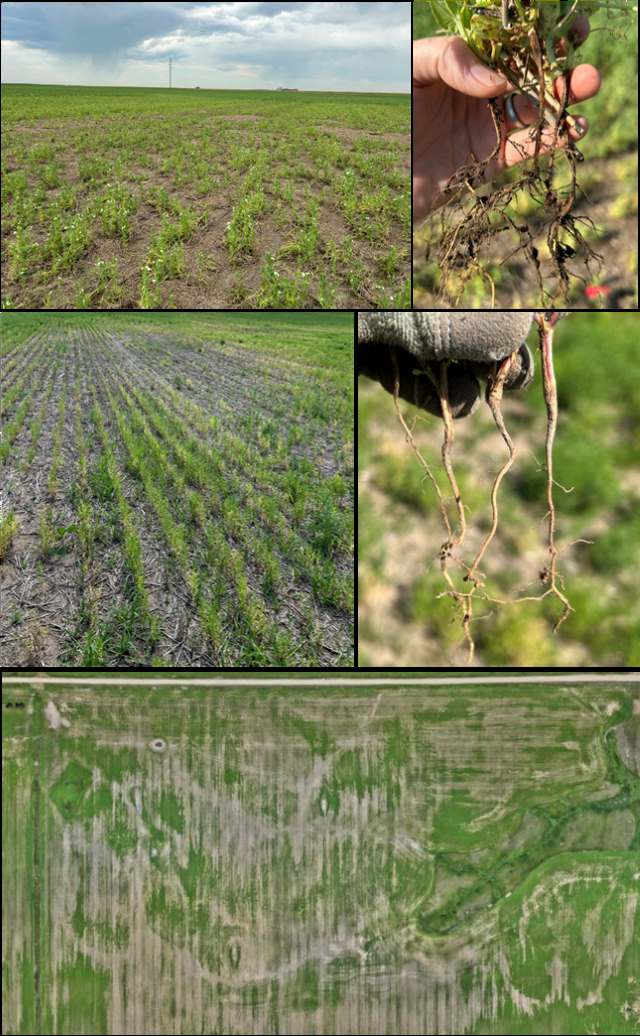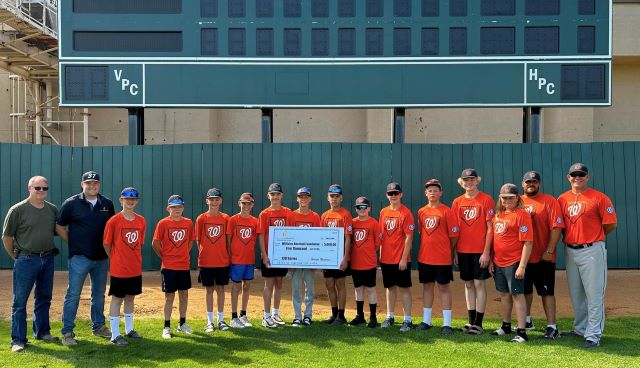Agronomy Update
Aug 05, 2024
Horizon Resources Yield Contest Deadline
Don’t forget to enter our yield contest before the August 10th deadline for your chance to win a Traeger Ironwood XL grill (pictures below). The contest rules are in a PDF and the link to sign up is here: https://forms.gle/K4yDUbAvo5Vn389e6Additionally, all qualifying entrants will be recognized with a free gift from Horizon Resources. Contest categories are dryland durum, dryland spring wheat and irrigated spring wheat. If you have any more questions please feel free to reach out to Dr. Audrey Kalil at the Williston Agronomy location.

Desiccation Update—Paraquat use in Pea and Lentil
Desiccation season is in full swing and the lentil and pea crops are changing in a hurry. Our custom applicators are busy spraying paraquat to dry down the peas and lentils for harvest. We are currently scouting fields and staging the crops for desiccation for our sprayers and yours. The pictures below are from late last week. Some areas are changing quick with low spots still hanging onto a little green. Our team will be available to discuss timing with you as you are making desiccation decisions.To ensure good desiccation, particularly where large weeds are present, we want to use the full rate of 22 oz./ac paraquat along with an NIS at a rate of 1qt/100 gal water, and 4 oz./ac Interlock to penetrate the canopy. Keep up the water rate at 20 gal/ac for the best coverage and within a week, we will see you in the field with the combine.
If you are having problems with bindweed or buckwheat in pea, note that paraquat is not going to do a great job desiccating those weeds so you may want to consider adding Sharpen as a tank mix partner with either paraquat or glyphosate. As always we are here to discuss those options with you. Stop in to see a member of our team at any of our agronomy locations.
Austin Semenko, Williston Agronomy Location Manager

Aphanomyces Root Rot— Status and Management
Aphanomyces root rot has been detected in multiple pea and lentil fields across Williams County this season from soil collected at the flowering to early pod growth stage and in one case prior to planting. Samples were submitted to the National Agricultural Genotyping Center in Fargo, which has the capability of measuring the amount of Aphanomyces DNA in soil and plant samples. There were a range of symptoms from large bare areas to patches of yellowing plants. The root systems on yellowing plants had few or no lateral roots or nodules. The pictures below are from some of the affected fields.It is critically important that this disease be managed proactively. If you see small yellowing patches, do not delay in extending rotations to five years or more between peas or lentils (six year rotation). If it gets to the point where the field is severely affected, it may be a decade or longer before peas or lentils can be successfully produced in that field again. The longer you wait to extend rotations, the worse it will get. Every pea and lentil crop you plant increases the amount of the pathogen in the field so time for that pathogen to die off in between host crops is required.
Planting early and using a fungicide seed treatment will also help in reducing yield loss due to root rot. Where Aphanomyces is present, seed rot and seedling blight pathogens also tend to proliferate and a fungicide seed treatment will help to manage those issues. Aphanomyces prefers warm and wet soils so early planting gives your crop a head start before conditions are conducive to pathogen growth. Planting peas and lentils late into May and early June puts your crop at increased risk. This year we had cool temperatures well into the growing season and I think that helped, but as you can see from the pictures below in some cases that wasn’t enough.
Alfalfa is also a host to this pathogen, so if you are planning to plant alfalfa consider selecting an Aphanomyces resistant variety. There are no pea or lentil varieties available that have resistance, although Canadian breeders have put a lot of effort in on this front. AAC Julius is a yellow pea recently released by Agriculture and Agri-Food Canada which seems to have improved root rot tolerance. It may be some time before lentil varieties with improved root rot tolerance are available as breeding is a slow process and the research is not as advanced as the efforts in pea. Chickpea and soybean are alternatives to pea and lentil in fields with severe root rot although you will still need to use a fungicide seed treatment.
If you want to test your soils this fall for Aphanomyces, or discuss how to manage this disease on your farm please feel free to reach out.
Dr. Audrey Kalil, Agronomist/Outreach Coordinator

Horizon Resources Supports Local Athletes
On July 27th the Williston 13u All Star team won the Babe Ruth Midwest Plains Regional Championship. To help with travel and expenses, Horizon Resources was very excited to donate towards this fine group of young men. Williston will now be heading to Glenn Allen, Virginia to compete in the 2024 Babe Ruth 13 year World Series against teams across the country. Horizon Resources along with the community of Williston are extremely proud and excited to watch these young men compete in the World Series. Good Luck!
Soil Sampling Pays!
The first weeks of harvest have been underway and although it doesn’t feel like it, summer is slowly fading away. We know your focus is on harvest but don’t lose sight of planning for next year and make sure to book your acres for soil sampling now. Soil sampling is bar none one of the best returns on investment you can make for your farming operation. Not only is it a great planning tool for next year’s fertilizer, but it can also be insightful to why you are seeing the yields you are experiencing on the farm. Maybe there is one field that doesn’t perform as well as the rest of the land you farm but the soils are all similar, having a soil sample taken on not only the poor field but the rest of the farm can bring you valuable insights that can help you improve yield in the fields that lack in productivity.Putting things as simple as possible, look at soil sampling no different than having an operating fuel gauge on your car. If you didn’t have a working fuel gauge on your car, how do you know how far your tank of fuel can take you? Will you make it to the next gas station on your road trip before you run out? So why farm without knowing what’s in your soil? Feed your crop what it needs, have soil samples taken on your farm!
Kyle Okke, Crop Consultant, CCA
Monitoring and Managing Fungicide Resistance
Every year plant pathologists from around the world representing both Universities and private industry meet at the annual American Phytopathological Society (APS) Plant Health meeting to share the latest research and product innovations. This year I attended the Plant Health meeting held in Memphis, TN and there was a strong emphasis on tracking and monitoring fungicide resistance. Just like weeds, pathogen populations are genetically diverse and some individuals within the population may have mutations that convey resistance to fungicides. When we use a fungicide we kill all the susceptible pathogens but the resistant ones survive. When we do this this year after year, the only pathogens left are those that are resistant to that mode of action and thus those products no longer successfully control disease. That is how we ended up with Ascochyta of pea and chickpea that are resistant to FRAC Group 11 products like Headline and Quadris in North Dakota and we are looking down the barrel of losing that group for lentil Anthracnose as well.At a workshop I attended, Dr. Kenneth Seebold, Senior Director for Research and Development at Valent USA shared the story of their product Presidio® with the active ingredient Fluopicolide (FRAC 43). They launched this product in 2009 for control of downy mildew and Phytophthora in a number of fruit and vegetable crops. By 2012 resistance was reported and by 2013/2014 they had to remove the product from some markets because it was no longer effective. Active ingredient development and product launches are expensive, and a lifespan of 5 years is not sufficient to recoup these costs. To keep Presidio working in the remaining markets they altered the label to manage fungicide resistance. The following were the major changes:
- Only allowed applications at the high rate
- Max of two instead of four applications
- No back to back applications
- Stressed that the product be applied preventatively rather than curatively, as spraying a fungicide on high levels of diseases increases risk of selecting for resistant strains.
Dr. Audrey Kalil, Agronomist/Outreach Coordinator